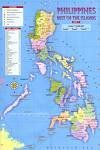THE MOON TIDES...
The word "tides" is a generic term used to define the alternating rise and fall in sea level with respect to the land, produced by the gravitational attraction of the moon and the sun. To a much smaller extent, tides also occur in large lakes, the atmosphere, and within the solid crust of the earth, acted upon by these same gravitational forces of the moon and sun.
What are Lunar TidesTides are created because the Earth and the moon are attracted to each other, just like magnets are attracted to each other. The moon tries to pull at anything on the Earth to bring it closer. But, the Earth is able to hold onto everything except the water. Since the water is always moving, the Earth cannot hold onto it, and the moon is able to pull at it. Each day, there are two high tides and two low tides. The ocean is constantly moving from high tide to low tide, and then back to high tide. There is about 12 hours and 25 minutes between the two high tides.
Tides are the periodic rise and falling of large bodies of water. Winds and currents move the surface water causing waves. The gravitational attraction of the moon causes the oceans to bulge out in the direction of the moon. Another bulge occurs on the opposite side, since the Earth is also being pulled toward the moon (and away from the water on the far side). Ocean levels fluctuate daily as the sun, moon and earth interact. As the moon travels around the earth and as they, together, travel around the sun, the combined gravitational forces cause the world's oceans to rise and fall. Since the earth is rotating while this is happening, two tides occur each day.
What are the different types of TidesWhen the sun and moon are aligned, there are exceptionally strong gravitational forces, causing very high and very low tides which are called spring tides, though they have nothing to do with the season. When the sun and moon are not aligned, the gravitational forces cancel each other out, and the tides are not as dramatically high and low. These are called neap tides.
SPRING TIDES
Spring TidesWhen the moon is full or new, the gravitational pull of the moon and sun are combined. At these times, the high tides are very high and the low tides are very low. This is known as a spring high tide. Spring tides are especially strong tides (they do not have anything to do with the season Spring). They occur when the Earth, the Sun, and the Moon are in a line. The gravitational forces of the Moon and the Sun both contribute to the tides. Spring tides occur during the full moon and the new moon.
NEAP TIDES
Neap TidesDuring the moon's quarter phases the sun and moon work at right angles, causing the bulges to cancel each other. The result is a smaller difference between high and low tides and is known as a neap tide. Neap tides are especially weak tides. They occur when the gravitational forces of the Moon and the Sun are perpendicular to one another (with respect to the Earth). Neap tides occur during quarter moons.
PROXIGEAN TIDES
The Proxigean Spring Tide is a rare, unusually high tide. This very high tide occurs when the moon is both unusually close to the Earth (at its closest perigee, called the proxigee) and in the New Moon phase (when the Moon is between the Sun and the Earth). The proxigean spring tide occurs at most once every 1.5 years.









No comments:
Post a Comment